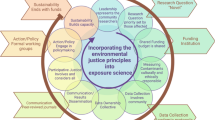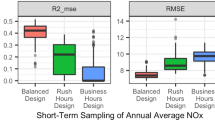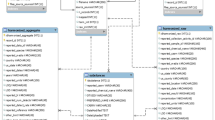Abstract
Community-based programs for assessing and mitigating environmental risks represent a challenge to participants because each brings a different level of understanding of the issues affecting the community. These programs often require the collaboration of several community sectors, such as community leaders, local governments and researchers. Once the primary concerns, community vulnerabilities and assets are identified, participants plan on how to address immediate actions, rank known risks, collect information to support decision making, set priorities and determine an evaluation process to assess the success of the actions taken. The evaluation process allows the community to develop new action plans based on the results obtained from earlier actions. Tracking the success of the community actions may be as simple as a visual/tangible result (e.g., cleaning a park) or as complex as the collection of specific measurements to track the reduction of toxic pollutants or to determine the presence of a specific contaminant. Recognizing that communities may need to perform measurements to meet their goals, this paper provides an overview of the available measurement methods for several chemicals and biologicals in relevant environmental samples to a community setting. The measurement methods are organized into several categories according to their level of complexity, estimated cost and sources. Community project technical advisors are encouraged to examine the objective(s) of the community to be addressed by a measurement collection effort and the level of confidence that needed for the data to make appropriate decisions. The tables provide a starting point for determining which measurement method may be appropriate for specific community needs.
This is a preview of subscription content, access via your institution
Access options
Subscribe to this journal
Receive 6 print issues and online access
$259.00 per year
only $43.17 per issue
Buy this article
- Purchase on Springer Link
- Instant access to full article PDF
Prices may be subject to local taxes which are calculated during checkout




Similar content being viewed by others
References
Barceló D., Oubiña A., Salau J.S., and Perez S. Determination of PAHs in river water samples by ELISA. Analytica Chimica Acta 1998: 376 (1): 49–53.
Barzyk T.M., Conlon K.C., Hammond D.M., Chahine T., Zartarian V.G., and Schultz B.D. Tools available to communities for conducting cumulative exposure and risk assessments. J Expo Sci Environ Epidemiol 2009.
Bradham K.D., Dayton E.T., Basta N.T., Schroder J.L., Payton M.E., and Lanno R.P. Effect of soil properties on lead bioavailability and toxicity to earthworms. Environ Toxicol Chem Special Issue: Risk Assess Metals Soils 2006: 25 (3): 769–775.
Brena B.M., Arellano L., Rufo C., Last M.S., Montaño J., Egaña Cerni E., Gonzalez-Sapienza G., and Last J.A. ELISA as an affordable methodology for monitoring groundwater contamination by pesticides in low-income countries. Environ Sci Technol 2005: 39 (11): 3896–3903.
Callahan M.A., and Sexton K. If cumulative risk assessment is the answer, what is the question? Environ Health Perspect 2007: 115 (5): 799–806.
Chuang J.C., Van Emon J.M., Tefft M.E., and Wilson N.K. Evaluation of an enzyme-linked immunosorbent assay for permethrin is soil and dust. Bull Environ Contam Toxicol 2008.
Clayton C.A., Pellizzari E.D., Whitmore R.W., Quackenboss J.J., Adgate J., and Sefton K. Distributions, associations, and partial aggregate exposure of pesticides and polynuclear aromatic hydrocarbons in the Minnesota Children's Pesticide Exposure Study (MNCPES). J Expo Anal Environ Epidemiol 2003: 13: 100–111.
Dankwardt A., and Hock B. Enzyme immunoassays for analysis of pesticides in water. Food Technol Biotechnol 1997: 35: 165.
Dayton E.T., Basta N.T., Payton M.E., Bradham K.D., Schroder J.L., and Lanno R.P. Contribution of soil properties to modifying lead bioavailability. Environmental Toxicology and Chemistry Special Issue: Risk Assessment of Metals in Soils 2006: 25 (3): 719–725.
Harper S.L., and Gutknecht W.F. Sources of variability in collection and preparation of paint and lead-coating samples. J Environ Monit 2001: 3 (3): 335.
Johnson J.C., and Van Emon J.M. Quantitative enzyme-linked immunosorbent assay for determination of polychlorinated biphenyls in environmental soil and sediment samples. Anal Chem 1996: 68 (1): 162.
Kelley M., Brauning S., Schoof R., and Ruby M. Assessing Oral Bioavailability of Metals in Soil. Battelle Press: Columbus, OH, 2002.
NACCHO. Protocol for Assessing Community Excellence in Environmental Health: A Guidebook for Local Health Officials. National Association of County and City Health Officials (NACCHO) CEHA Program, 2000 May 2000.
Nichkova M., Galve R., and Marco M.P. Biological monitoring of 2,4,5-trichlorophenol: evaluation of an enzyme-linked immunosorbent assay for the analysis of water, urine and serum samples. Chem Res Toxicol 2002: 15 (11): 1371.
Nichkova M., Park E., Koivunen M.E., Kamita S.G., Gee S.J., Chuang J.C., Van Emon J.M., and Hammick B.D. Immunochemical determination of dioxins in sediment and serum samples. Talanta 2004: 63: 1213.
Pleil J.D., Kim D., Prah J.D., Ashley D.L., and Rappaport S.M. “The Unique value of Breath Biomarkers for Estimating Pharmacokinetic Rate Constants and Body Burden from Environmental Exposures”. World Scientific Publishers, Singapore, 2005.
Pleil J.D., Kim D., Prah J., Ashley D.L., and Rappaport S.M. “Exposure reconstruction for reducing uncertainty in risk assessment: Example using MTBE biomarkers and a simple pharmacokinetic model”. Biomarkers 2007: 12 (4): 331–348.
Quevauviller P. Challenges for achieving traceability of environmental measurements. Trends Analyt Chem 2004a: 23 (3): xi–xii.
Quevauviller P. Traceability of environmental chemical measurements. Trends Analyt Chem 2004b: 23 (3): 171–177.
Quevauviller P., and Donard O. Stated references for ensuring traceability of chemical measurements for long-term environmental monitoring. Trends Analyt Chem 2001: 20 (11): 600–613.
Ryan P.B., Burke T.A., Cohen Hubal E.A., Cura J.J., and McKone T. Using biomarkers to inform cumulative risk assessment. Environ Health Perspect 2007: 111 (5): 833–840.
Sather M.E., Varns J.L., Mulik J.D., Glen G., Smith L., and Stallings C. Passive Ozone Network of Dallas: a modeling opportunity with community involvement. 2. Environ Sci Technol 2001: 35: 4426–4435.
Sexton K., and Hattis D. Assessing cumulative health risks from exposure to environmental mixtures—three fundamental questions. Environ Health Perspect 2007: 115 (5): 825–832.
USEPA. Health risks and economic impact assessments of suspected carcinogens: interim procedures and guidelines. Fed Regist 1976: 41 (102): 21402–21405.
USEPA. Guidelines for the health risk assessment of chemical mixtures. EPA/630/R-98/002. U.S. Environmental Protection Agency, Risk Assessment Forum, Office of Research and Development, Washington, DC 1986.
USEPA. Risk Assessment Guidance for Superfund, Volume 1: Human Health Evaluation Manual (Part A), Section 8.2.2. EPA/540/1-89/002. US Environmental Protection Agency, Office of Sold Waste and Emergency Response, Washington DC 1989.
USEPA. Reducing Risk: Setting Priorities and Strategies for Environmental Protection. SAB-EC-90-021. US Environmental Protection Agency, Science Advisory Board, Washington, DC 1990.
USEPA. Guidelines for Exposure Assessment. EPA/600/Z-92/001. US Environmental Protection Agency, Risk Assessment Forum, Office of Research and Development, Washington, DC 1992.
USEPA. Guidance on Cumulative Risk Assessment, Part 1 Planning and Scoping. US Environmental Protection Agency, Science Policy Council, Washington, DC 1997.
USEPA. Supplementary Guidance for Conducting a Health Risk Assessment of Chemical Mixtures. EPA/630/R-00/002. US Environmental Protection Agency, Risk Assessment Forum, Office of Research and Development, Washington DC 2000.
USEPA. Revised Organophosphate Pesticide Cumulative Risk Assessment. US Environmental Protection Agency, Office of Pesticide Program, Office of Prevention, Pesticides and Toxic Substances, Washington, DC 2002a.
USEPA. Guidance on Cumulative Risk Assessment of Pesticide Chemicals that have a Common Mechanism of Toxicity. US Environmental Protection Agency, Office of Pesticide Programs, Office of Prevention, Pesticides, and Toxic Substances, Washington, DC 2002b.
USEPA. Framework for Cumulative Risk Assessment. EPA/630/P-02/001F. U.S. Environmental Protection Agency, Risk Assessment Forum, Office of Research and Development, Washington, DC 2003.
USEPA. Community Action for a Renewed Environment Brochure. EPA-400-F-06-003. Available: www.epa.gov/care/library/care_brochure_2006.pdf, 2005.
USEPA. A Framework for the Public Health Impacts of Risk Management Decisions. U.S. Environmental Protection Agency, Office of Research and Development, Washington, DC 2007a.
USEPA. Guidance for Evaluating the Oral Bioavailability of Metals in Soils for the Use in Human Health Risk Assessment. 2007, OSWER 9285.7-80. http://www.epa.gov/superfund/bioavailability/guidance.htm, 2007b.
USEPA. Framework for Metals Risk Assessment. 2007, EPA 120/R-07/001 2007c.
USEPA. Estimation of Relative Bioavailability of Lead in Soil and Soil-like Materials Using In Vivo and In Vitro Methods. 2007, OSWER 9285.7-77 2007d.
USEPA. 2008a The CARE Roadmap: 10-Step Plan to Improve Community Environment and Health, U.S. Environmental Protection Agency CARE Program. EPA 400-K-08-002. June 2008. http://epa.gov/care/library/20080620roadmap.pdf.
USEPA. The Community CARE Resource Guide. www.epa.gov/osp/care/library/CARE_ResourceGuide.pdf, 2008b.
Van Emon J.M., Hammock B., and Seiber J.N. Enzyme-linked immunosorbent assay for paraquat and its application to exposure analysis. Anal Chem 1986: 58: 1866.
Van Emon J.M. Immunochemical applications in environmental science. J AOAC Int 2001: 84 (1): 125–133.
Van Emon J.M. . (ed). Immunoassay and Other Bioanalytical Techniques. CRC Press: Boca Raton, FL, 2006.
Varns J.L., Mulik J.D., and Betz E.A. Video: Site Training for the POND (Passive Ozone Network in Dallas), a peer-reviewed video for generic instruction of lay operations in a passive ozone monitoring network; distributed to 30-site network in and surrounding Dallas, TX, 1998: EPA/600-V-98/001, 12 min, 1998.
Varns J.L., Mullik J.D., Sather M.E., Glen G., Smith L., and Stallings C. Passive Ozone Network of Dallas: a modeling opportunity with community involvement 1. Environ Sci Technol 2001: 35: 845–855.
Vesper S., McKinstry C., Haugland R., Wyner L., Bradham K., Ashley P., Cox D., DeWalt G., and Friedman W. Development of an environmental relative moldiness index for US homes. J Occup Environ Med 2007a: 49 (8): 829–833.
Vesper S., McKinstry C., Ashley P., Haugland R., Yeatts K., Bradham K., and Svendsen E. Quantitative PCR analysis of molds in the dust from homes of asthmatic children in North Carolina. J Environ Monit 2007b: 9: 826–830.
Watanabe H., Nguyen M.H.T., Komany S., Vu S.H., Asami Y., Phong T.K., and Tournebize J. Applicability of ELISA in pesticide monitoring to control runoff of bensulfuron-methyl and simetryn from paddy fields. J Pest Sci 2006: 31 (2): 123–129.
William K.J., Thorpe S.A., and Reynolds S.L. The use of ELISA for the determination of pesticide residues in food. Int J Anal Chem 1996: 65 (1–4): 149–152.
Zartarian V., and Schultz B. EPA's human exposure research program for assessing cumulative risk in communities. J Expo Sci Environ Epidemiol 2009.
Acknowledgements
We thank all the EPA scientists who contributed their suggestions and comments to the development of the Measurement Methods Tool Tables, in particular Kent Thomas, Valerie Zartarian, Tim Barzyk, Matthew Lakin, Kathryn Conlon, Davyda Hammond, Peter Egeghy and Ingrid Ward. We are grateful to Steve Vesper for the donation of his pictures and to Elizabeth Betz for digitalizing the POND's training video.
Author information
Authors and Affiliations
Corresponding author
Additional information
Disclaimer
This paper has been reviewed in accordance with the United States Environmental Protection Agency's peer and administrative review policies and approved for presentation and publication. Mention of trade names or commercial products does not constitute endorsement or recommendation for use.
Supplementary Information accompanies the paper on the Journal of Exposure Science and Environmental Epidemiology website
Rights and permissions
About this article
Cite this article
Medina-Vera, M., Van Emon, J., Melnyk, L. et al. An overview of measurement method tools available to communities for conducting exposure and cumulative risk assessments. J Expo Sci Environ Epidemiol 20, 359–370 (2010). https://doi.org/10.1038/jes.2009.23
Received:
Accepted:
Published:
Issue Date:
DOI: https://doi.org/10.1038/jes.2009.23
Keywords
This article is cited by
-
Community-based disaster management: a review of progress in China
Natural Hazards (2013)
-
The EPA's human exposure research program for assessing cumulative risk in communities
Journal of Exposure Science & Environmental Epidemiology (2010)
-
Tools available to communities for conducting cumulative exposure and risk assessments
Journal of Exposure Science & Environmental Epidemiology (2010)



